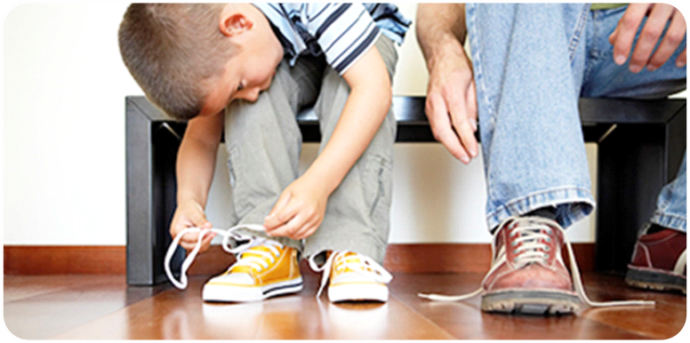Dr. Vivek Sharma says that poorly fitting shoes causes foot damage. Wearing comfortable shoes that fit well can prevent many foot ailments. Shoes are a natural blessing for us because feet generally aren’t regarded as a place where the battle for self esteem is won or lost.
Foot problems will affect most of us at some point in our lives, one general recommendation that will ease the discomfort of most common foot problems is proper fitting shoes. Poorly fitting shoes can make symptoms of foot pain worse and in many cases be the primary cause of the actual problem.
Too small or too large?
Shoes that are too small hinder proper foot growth, decreases circulation, cause blisters, ingrown toe nails and joint plain hurts. Shoes that are too big can cause uncomfortable chafing or blisters on your child’s heel as well as prevent them from being able to grip the ground properly when running or climbing. Shoes that are too large also cause tripping on the front of the toe, risking serious injury.
Shoe material makes a big difference
Materials like leather and canvas are great for children’s shoes because they have a long durability and are breathable and flexible. They stretch and soften with use. In toddlers and children, a shoe with flexible sole is recommended. Development of longitudinal arch seems to be best in societies where shoes are not worn.
Well-cushioned, shock absorbing shoes are helpful for the child and adolescent athlete to decrease the changes of developing overuse syndrome. Experts agree that being bare foot is the best. The reasons for babies to wear foot coverings are for warmth, to compliment an outfit or for foot protection.

Bad consequences of ill fitted shoes
Shoes which are too short can have negative effects on children’s feet. When children rarely wear smaller sized shoes, there are no serious consequences to worry about (aside from reddened skin, blisters and painful feet). It gets worse if children’s shoes are always too small, during different stages of development.
Importance of “Shoe free time”
- Muscular System: When the toes are cramped in the shoes it changes the natural direction of the muscles.
Results: Muscle and tendon pain, inflammation and a dystrophy, or shortening of the foot muscles. - Toe joints: Wearing shoes which are too short and tight distorts the natural position of the toes.
Results: Painful joint and changes in the position of the toe joints (e.g. Hallux Valgus, Lumions). - Vascular System: Shoes which are too short force the feet into an unnatural position, which can cause circulatory problems.
Results: Sensation of cold and numbness, vein problems (e.g. varicose veins).
The whole body
A weak foundation influences the whole body. The change in posture caused by foot injuries can result in knee, hip and back problems even the heart and vascular system can be indirectly affected. Many athletic activities require healthy feet (for e.g. jogging), unhealthy feet can therefore lead to a reduction in physical activity which is known to be a root of a number of diseases – causing factors like lack of fitness, high blood pressure etc.
Tips for getting a proper pair of shoes for your child’s feet
- Select a shoe that is shaped like your foot.
- Don’t select shoes by the size marked inside the shoe but by how the shoe fits your foot.
- Don’t buy shoes that feel too tight and expect them to stretch to fit.
- The size of feet changes as you grow older, so always have your feet measured before buying shoes. The best time to measure your feet is at the end of the day when your feet are largest.
- Most of us have one foot that is large than the other, so prefer the larger foot.
- Make sure the ball of your foot fits comfortably into the widest part of the shoe.
- Your heel should fit comfortably in the shoe with a minimum amount of slipping.
- Walk in the shoes to make sure they fit and feel right. Then, take them home and spend some time walking on carpet to make sure the fit is good.
The upper part of the shoes should be made of soft, flexible material to match the shape of your foot. Shoes made of leather can reduce the possibility of skin in-duration, and soles should provide solid footing and not be slippery. Thick sole cushions your feet when walking on hard surfaces. Low heeled shoes are more comfortable, safer and less damaging than high heeled shoes.
Years of wear and tear can be hard on your feet. So, it can cause diseases, poor circulation, improperly trimmed toe nails, if wearing shoes that don’t fit properly. Problems with our feet can be the first sign of severe medical diseases in future. Poorly fitted shoes causes foot damage. Wearing comfortable shoes that fit well can prevent many foot ailments.
Author: Dr. Vivek Sharma
Consultant Paediatrician
Rungta Hospital
Email: drvivek_sharma@rediffmail.com
Advisory board member of Canvas International School

